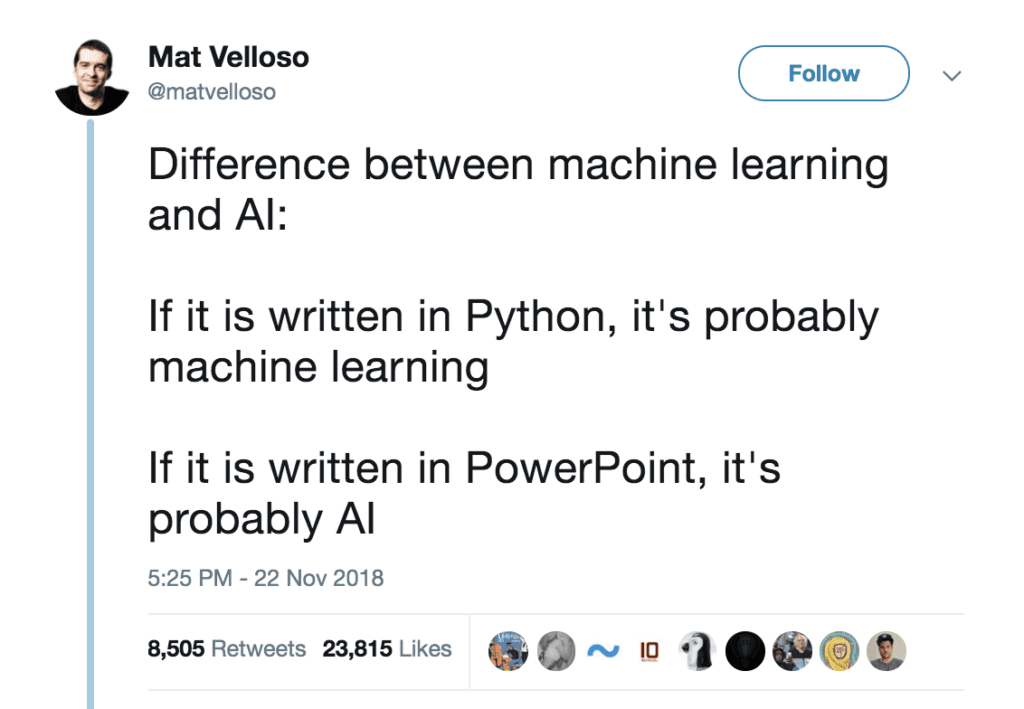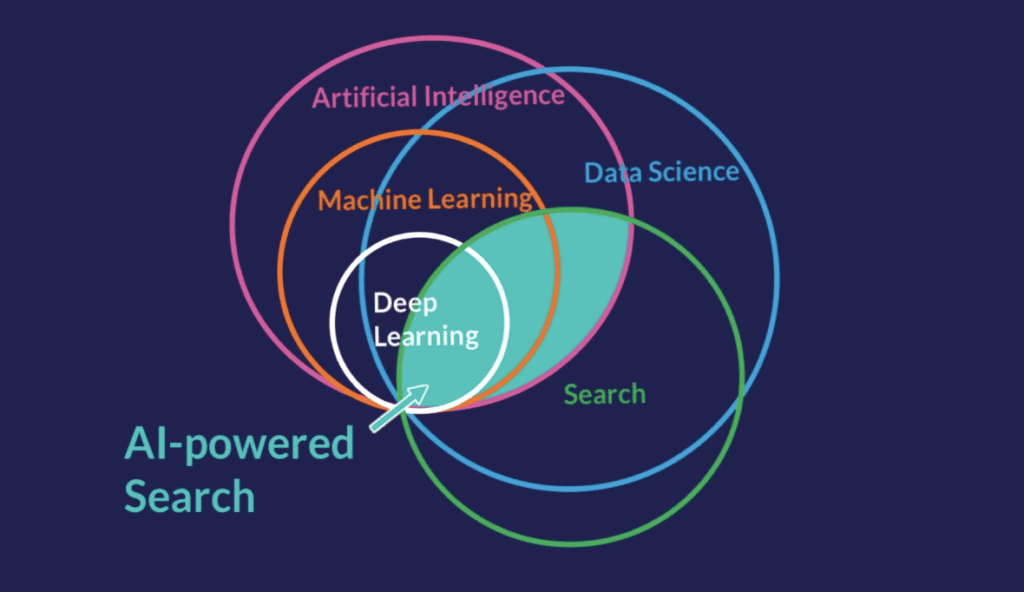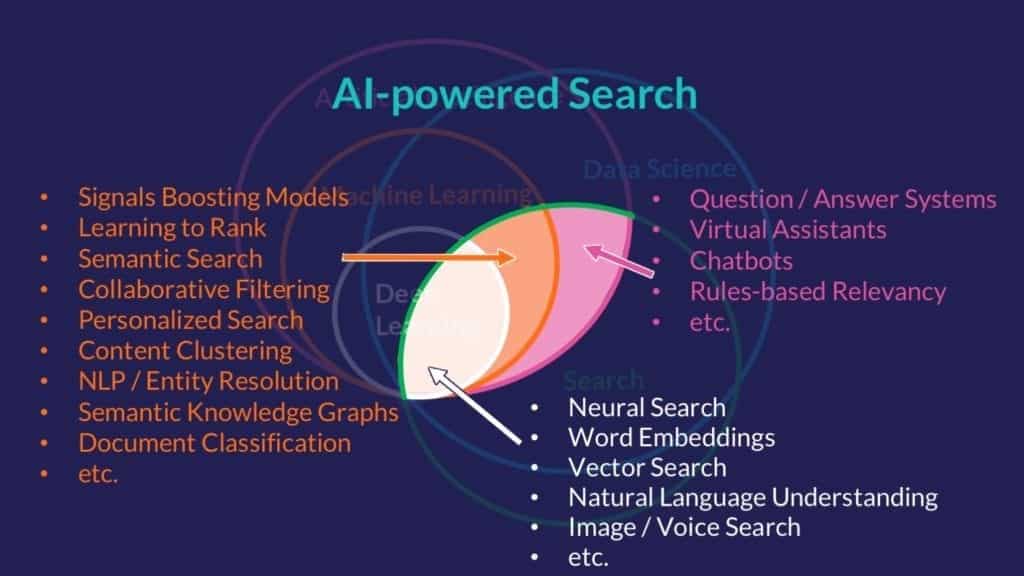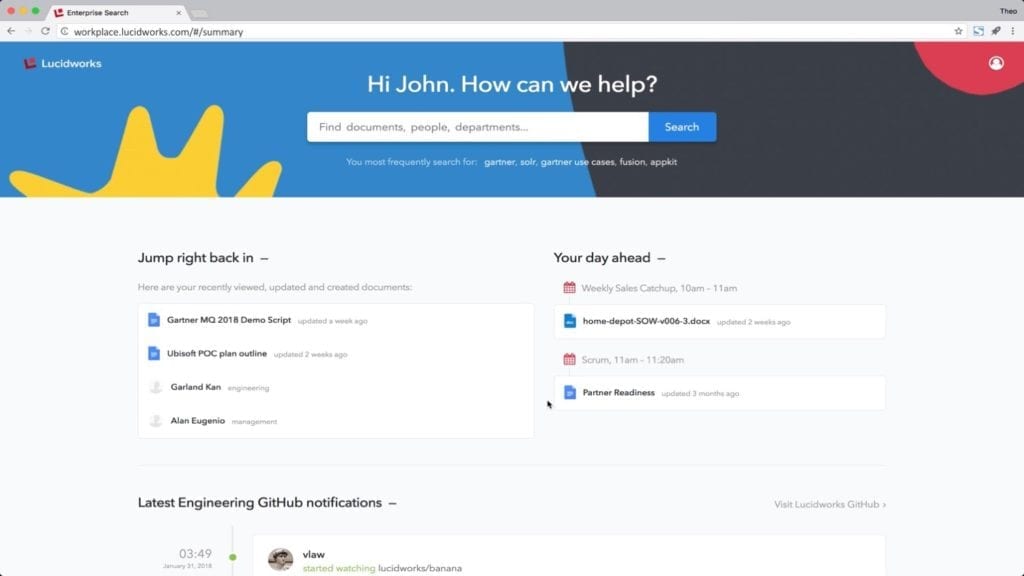How AI-Powered Search Enables Digital Transformation
Digital transformations happen when an organization’s content, user interactions, and domain knowledge are brought together into a connected data experience. A never-ending stream of digital moments form a fabric of information that should ultimately become personalized experiences for employees, empowering them with insights that improve business success.

AI-powered search is the de-facto user interface for facilitating a digital transformation in the workplace, just as search is the universal user interface in the modern digital age. In a recent Washington Post article, chairman of the Federal Reserve Jerome Powell cited research out of MIT that found “people would have to be paid $17,530 per year to stop using search engines.” With the median annual wage in the US at $47,000, this means a typical person would be willing to forgo a 37% raise just to have continued access to search. Search is a necessity of modern life, an instinctual way for people to interact with data.
AI-powered Search Deconstructed
But what exactly is “AI-powered” search? AI is such a buzzword today, it’s hard not to roll your eyes when someone tells you they deliver an “AI-powered” solution.
One of my favorite recent tweets exemplifies this divide between real solutions and marketing hype:

For marketing departments, everything is called “AI-powered” now, which is why it’s important to talk in concrete terms about what real-world “AI-powered search” actually means. In order to do that, we have to deconstruct AI-powered search and take a deeper look at the components that enable its capabilities.
If we picture these buzzwords as a venn diagram, it’s easier to explain their relationships:

- Artificial Intelligence (AI) is any time a computer solves tasks in a way that mimics human behavior.
- Machine Learning (ML) is a subset of AI focused on applying algorithms that learn from data without having to be explicitly programmed.
- Deep Learning is then a specific subset of ML algorithms based on deeply-layered neural networks.
- Data Science is a field that intersects heavily with AI, ML, and deep learning, but reaches beyond them—often including things like data visualization and analytics.
- Search also heavily overlaps, but includes additional concepts like scaling, infrastructure, and content acquisition.
- AI-powered Search is the intersection of AI and Search, a subsection of all of the previously defined topics.
Within AI-powered search, different systems and capabilities are available:

Question/answer systems, virtual assistants, and chatbots live in the outermost layer (pink), as they leverage artificial intelligence but may or may not use machine learning. In the next level down (orange), machine learning algorithms are applied, making possible semantic search, recommendations, natural language processing, personalization, semantic knowledge graphs, machine-learned ranking, etc.. Finally, in the deep learning circle, the most cutting-edge and sophisticated algorithms are leveraged for image and voice search and natural language understanding.
All of these capabilities work toward the goal of finding relationships within data to connect people to information, people to insights, and people to the right people within your organization.
Learning From Repetition
But just like people, data relationships continually evolve. When a top expert creates content based upon their specialized knowledge, when new products are added to your inventory, or when new people, projects, and business-specific jargon continually show up, AI-powered search relies on feedback loops to keep search results up-to-date and relevant.

For example, when a user searches for a query and gets a set of search results, they then take some action—perhaps they click on one result, bookmark another—those actions feed back into the system and the engine learns from a user’s behavior which results they prefer. Now the system is able to build better models to improve the next user’s search results. This cycle repeats ad infinitum so the system gets smarter with every user interaction.
Personalization
Since we’re leveraging user interactions to improve search results in aggregate for all users, we can also use each user’s individual interactions to build an understanding of their unique interests to drive a personalized search experience.

Search results for an employee in the marketing department can then be influenced by their calendar for the day, tweets from accounts they follow, and recent articles they’ve read for a blog post they’re authoring. For an employee in engineering, Github notifications might be included. In sales, new product release notes relevant to their particular prospects could be displayed.
Ultimately, the AI-powered search engine is able to learn from an organization’s data, to connect the dots between data points, content, and user behavior, and to create an understanding of a business that enables massive leaps forward in employee productivity. It’s that $17,500 a year search box, but now delivered to your employees equipped with your unique organizational knowledge.
Interested in learning more about how Lucidworks can transform your digital workplace? Read on to understand why we’re not just a search tool.
This blog post is adapted from a talk given at The Digital Transformation Conference.